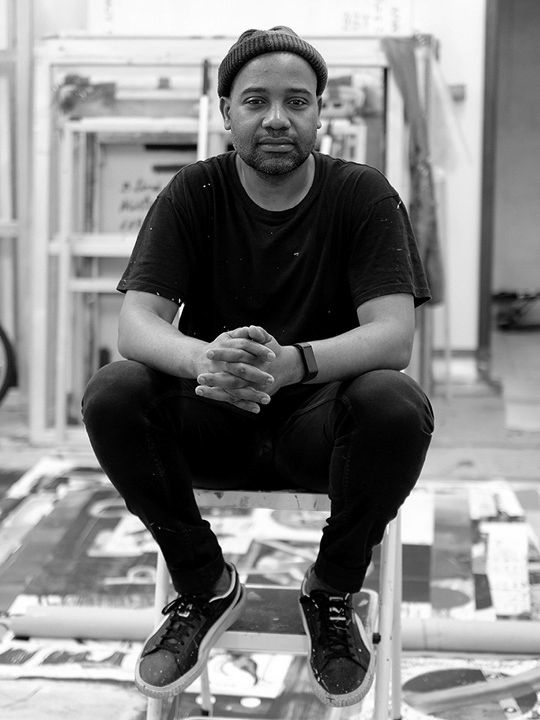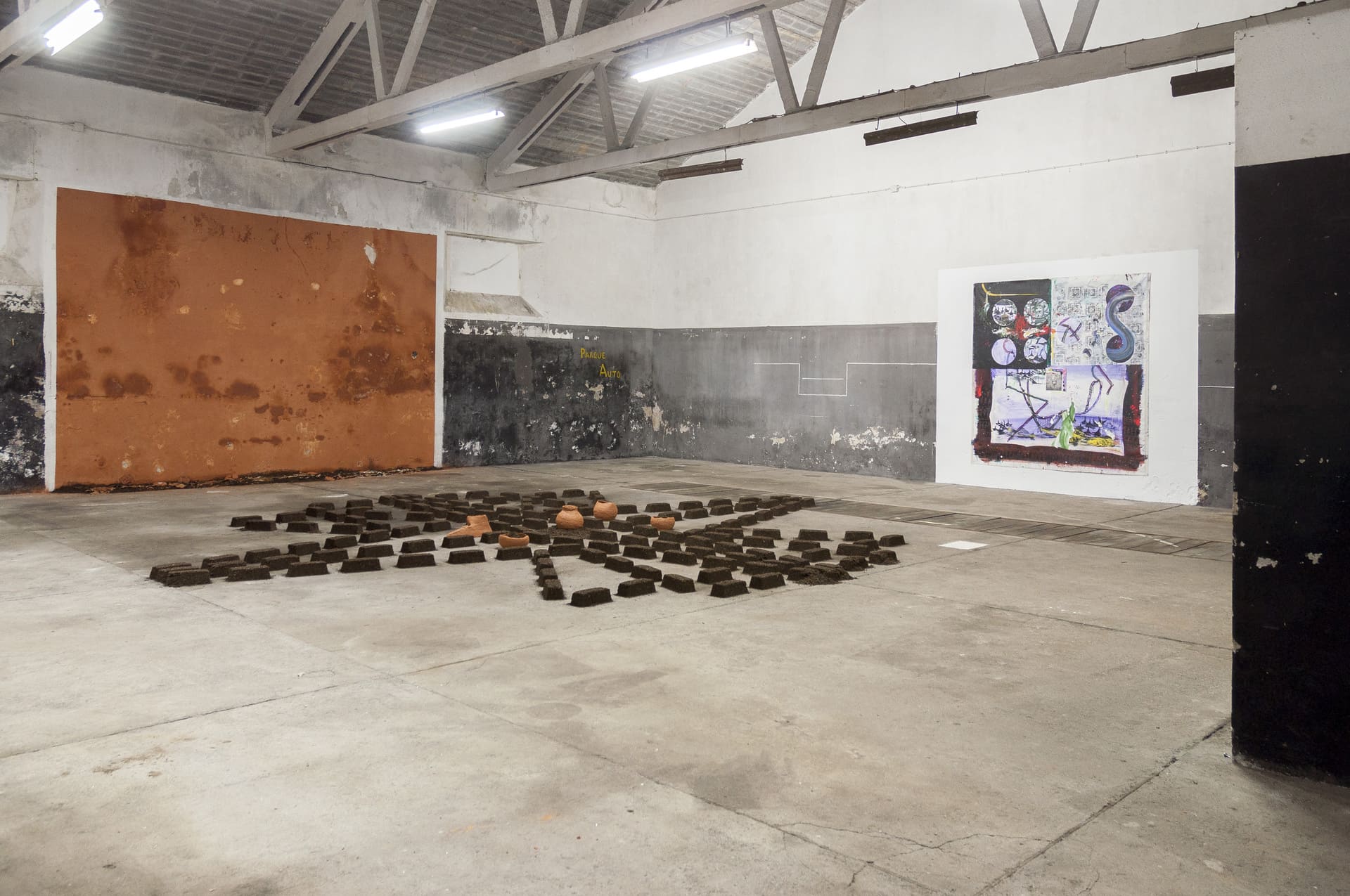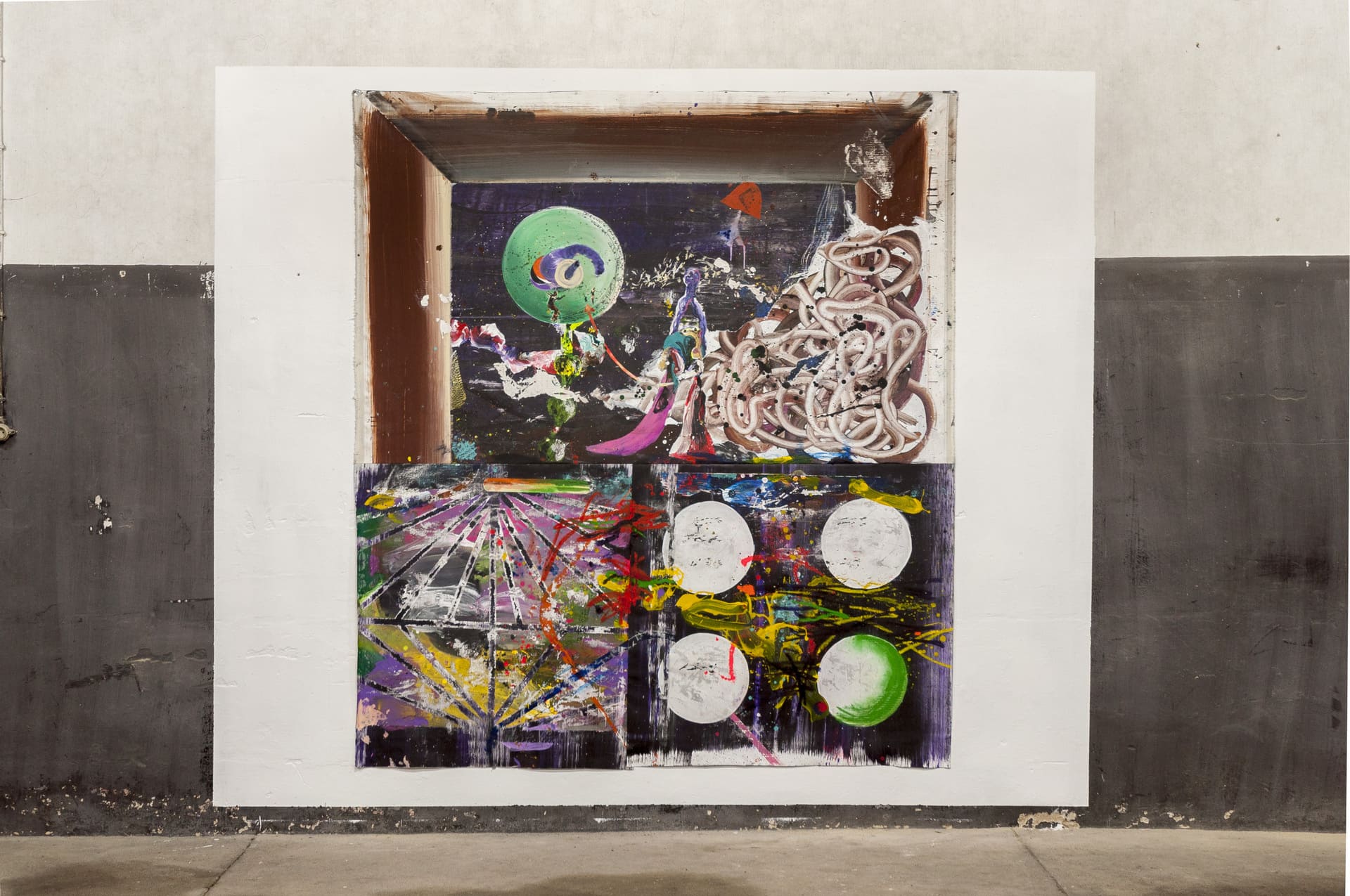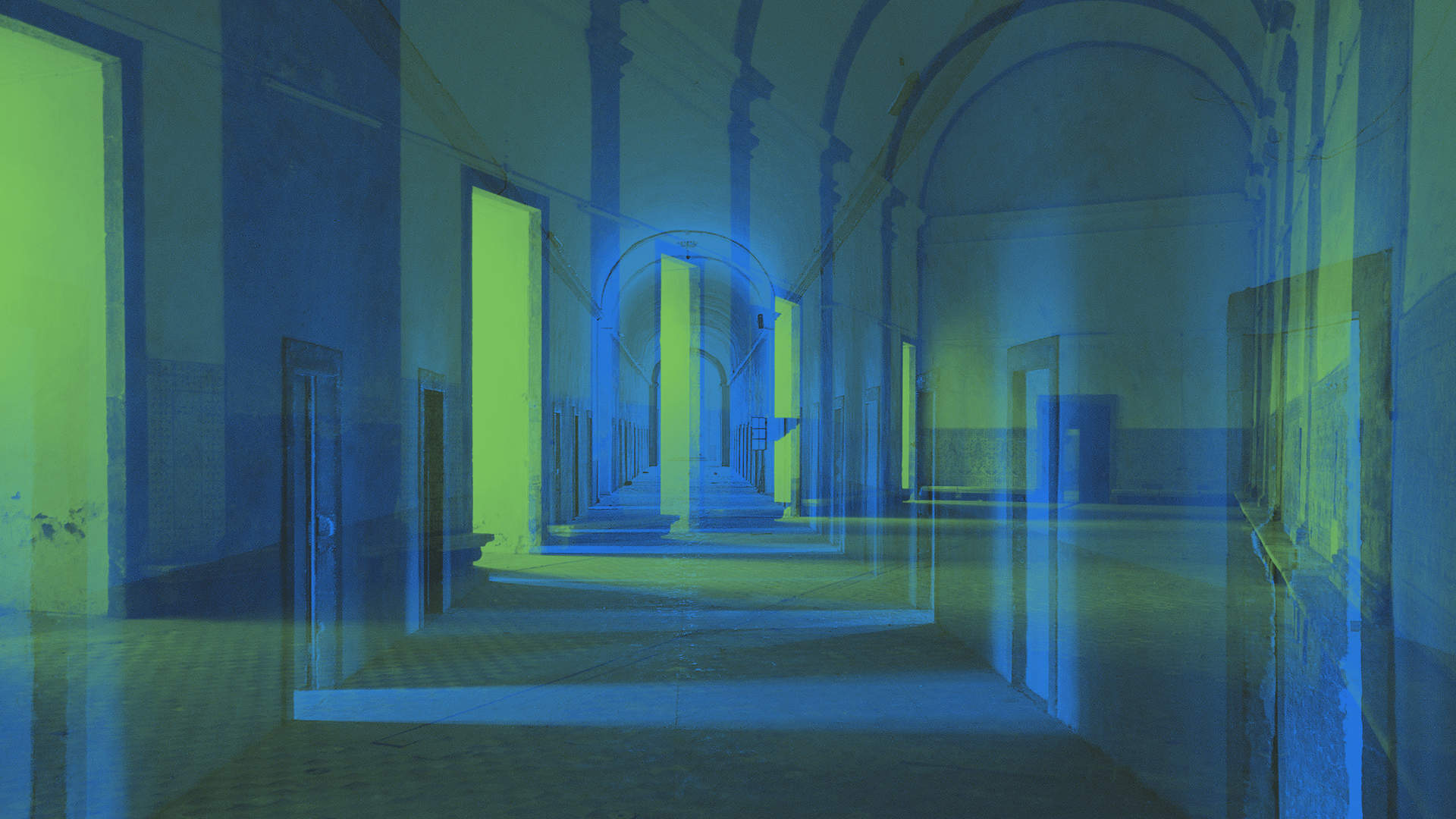Ilídio
Candja Candja
Ilídio Candja Candja



Mozambique, 1976
Ilídio Candja Candja (Maputo, Mozambique, 1976) has been developing a multifaceted painting practice that reverberates his cultural heritage. The combination of techniques — from painting with acrylic paint to marker drawings, the use of spray paint and assemblage procedures that invoke other materials — is transformed into a unique vocabulary whose inherent virtue is the expression of the artist’s relationship with the theme of religiosity, ancestry, immigration, oral heritage and communication between the past and the present.
He creates large-scale paintings and altars from clay and ceramic objects in symbiotic coexistence. A symbol and vehicle of communication between distant existences and times, the altar appears as a reminiscence of the rituality linked to the land, rooted in the social context in which the artist grew up. By celebrating his cultural and historical heritage, Ilídio Candja Candja reinvents approaches to the experience of colonial trauma, immigration, and racism, establishing intercultural dialogues through an aesthetic practice full of voices.
Pregador de Almas, 2024
Installation, variable materials and dimensions
Courtesy of the artist.
In Pregador de Almas, a work commissioned by the Biennial, Ilídio Candja Candja builds two different channels of communication with other planes: the painting and the altar. As the centrepiece of the installation, around which the large canvases hang, the altar appears as a way of recounting the “homecoming” of Saartjie Baartman — an ethnic Khoisan woman taken to Europe in the 19th century to be exhibited for her “curious” biotype. Built in one of the garages that once served as military workshops, the installation is transformed into a place for her eternal rest.
By creating a parallel with the story of the return of her remains from France to South Africa at the request of then-president Nelson Mandela, Ilídio Candja Candja also proposes an alternative to the traditional representations of her figure. Saartjie Baartman was first taken to London in 1810 to be publicly exhibited in circuses and fairs — her body was the object of morbid curiosity, portrayed through the lens of colonial racism, used to justify theories of scientific racism, and, after her death, exhibited in parts at the Museum of Man in Paris until 1974. By complexifying the victim/tormentor dualism, the artist encourages a less narrow reading of her story and, despite recognising the multiple forms of violence involved, he protects the imagery of resistance that her life gives rise to.
Ilídio Candja Candja lives in Porto. His work has been exhibited in various national and international institutions, including: Oliewenhuis Art Museum, Casa-Museu Bissaya Barreto, Museo de Arte Moderno de Cartagena, Museu Nacional de Arte de Maputo, Galeria Quadrum, Galeria São Mamede, Johnson Lowe Gallery, Galerie Le Sud, Galerie Frederic Storme, GAFRA Gallery, Galerie Lumieres d’ Afrique and Plataforma Revólver.



